
Falealupo: The Hidden Gem of Samoa
Discover Falealupo, Samoa's hidden gem, where pristine beaches, lush rainforests, and rich traditions offer an unforgettable escape in the heart of the Pacific.
Nestled on the western tip of Savai'i, the largest island in Samoa, Falealupo offers an enchanting escape to a world where nature and culture harmoniously coexist. This serene village is renowned for its stunning landscapes, rich traditions, and warm hospitality. Visitors to Falealupo will be captivated by its pristine beaches, crystal-clear waters, and lush rainforests. One of the must-see attractions is the Falealupo Canopy Walkway, a suspended bridge that provides an unforgettable bird's eye view of the tropical forest. For those interested in history and culture, the remains of the ancient Star Mound and the mystical House of Rock are intriguing sites that tell stories of the past. The village is also known for its breathtaking sunsets, best viewed from the Sunset Strip, where the sky transforms into a canvas of vibrant colors. As night falls, the clear skies offer a dazzling display of stars, making Falealupo an ideal destination for stargazing. Whether you're an adventurer, a history buff, or simply seeking relaxation, Falealupo promises a unique and memorable experience.
Local tips in Falealupo
- Visit the Falealupo Canopy Walkway early in the morning to avoid crowds and enjoy cooler temperatures.
- Bring cash, as ATMs and credit card facilities are limited in the village.
- Respect local customs by dressing modestly, especially when visiting villages and cultural sites.
- Carry insect repellent to protect against mosquitoes, particularly in the forested areas.
- Plan your visit around sunset to experience the stunning views from the Sunset Strip.
Falealupo: The Hidden Gem of Samoa
Nestled on the western tip of Savai'i, the largest island in Samoa, Falealupo offers an enchanting escape to a world where nature and culture harmoniously coexist. This serene village is renowned for its stunning landscapes, rich traditions, and warm hospitality. Visitors to Falealupo will be captivated by its pristine beaches, crystal-clear waters, and lush rainforests. One of the must-see attractions is the Falealupo Canopy Walkway, a suspended bridge that provides an unforgettable bird's eye view of the tropical forest. For those interested in history and culture, the remains of the ancient Star Mound and the mystical House of Rock are intriguing sites that tell stories of the past. The village is also known for its breathtaking sunsets, best viewed from the Sunset Strip, where the sky transforms into a canvas of vibrant colors. As night falls, the clear skies offer a dazzling display of stars, making Falealupo an ideal destination for stargazing. Whether you're an adventurer, a history buff, or simply seeking relaxation, Falealupo promises a unique and memorable experience.
When is the best time to go to Falealupo?
Iconic landmarks you can’t miss
Alofaaga Blowholes
Discover the breathtaking Alofaaga Blowholes in Samoa, where ocean waves create stunning natural geysers that reach up to 30 meters high.

Falealupo Beach Fales
Discover tranquility and beauty at Falealupo Beach Fales, a serene escape on the pristine shores of Samoa, blending nature with cultural hospitality.

Falealupo Canopy Walkway
Discover the breathtaking Falealupo Canopy Walkway, where adventure meets tranquility in the heart of Samoa's lush rainforest.

Seeti Beach Fales
Discover the serene beauty of Seeti Beach Fales, where rustic charm meets pristine beaches and warm Samoan hospitality in Falealupo.
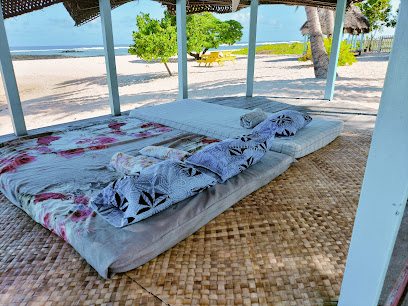
Pe'ape'a Cave
Explore Pe'ape'a Cave, a stunning natural wonder in Samoa featuring breathtaking rock formations and rich cultural significance.

Cape Mulinuu
Experience the natural beauty and tranquility of Cape Mulinuu, a hidden gem beach in Samoa perfect for relaxation and adventure seekers.

Ancient Star Mound
Discover the Ancient Star Mound in Vaisigano, a hidden gem reflecting Samoa's rich astronomical history and cultural heritage.
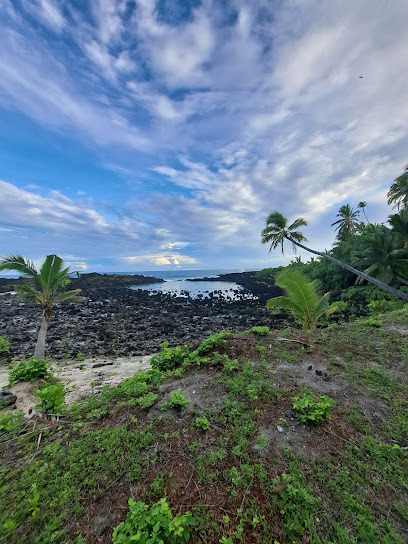
Moso's Footprint
Explore Moso's Footprint: a captivating natural wonder in Samoa, rich in myth and surrounded by breathtaking scenery.

Le-Fale-O-Le-Fe'e (Samoan megalithic pre-historical landmark)
Explore Le-Fale-O-Le-Fe'e, a captivating Samoan megalithic landmark that unveils the rich prehistoric heritage of Samoa near Apia.

Falealupo Church Ruins
Explore the historical charm of Falealupo Church Ruins, a serene monument reflecting Samoa's rich cultural heritage amidst breathtaking nature.

Cape Mulinu'u
Experience the untouched beauty of Cape Mulinu'u, a tranquil peninsula in Samoa where nature and culture coexist in harmony.

Falealupo Rainforest Preserve
Explore the lush greenery and rich biodiversity at Falealupo Rainforest Preserve, a must-visit destination for nature enthusiasts in Samoa.

Unmissable attractions to see
Alofaaga Blowholes
Experience the awe-inspiring Alofaaga Blowholes in Taga Salega, a breathtaking natural spectacle showcasing the power of the Pacific Ocean.

Falealupo Canopy Walkway
Experience the breathtaking Falealupo Canopy Walkway, where you stroll through Samoa's lush rainforest and enjoy stunning views of nature's beauty.
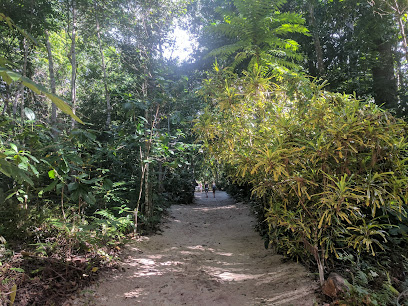
Essential places to dine
Paddles Restaurant
Discover exquisite local flavors at Paddles Restaurant in Apia - where culinary artistry meets breathtaking ocean views.

Giordano's Pizzeria // Samoa
Experience authentic Italian cuisine at Giordano's Pizzeria in Apia, Samoa - where every slice tells a story.

Le Lagoto Resort & Spa
Discover serenity at Le Lagoto Resort & Spa in Savai'i – where luxury meets nature in a breathtaking tropical paradise.

Amanaki Hotel
Experience authentic Samoan cuisine and warm hospitality at Amanaki Hotel - your culinary oasis in Apia.

Amoa Resort Savaii
Discover paradise at Amoa Resort Savaii with stunning views, delectable dining, and warm Samoan hospitality for an unforgettable getaway.

Scalini's Restaurant
Experience the best of Samoan flavors at Scalini's Restaurant in Apia - where culinary excellence meets warm hospitality.

Tifaimoana Indian Restaurant
Experience authentic Indian cuisine at Tifaimoana Indian Restaurant in Apia – where every dish tells a story!

Kokobanana Bar & Grill
Discover authentic Samoan flavors at Kokobanana Bar & Grill in Apia – where every meal tells a story!

Bistro Tatau Restaurant
Discover authentic Samoan flavors at Bistro Tatau in Apia – where every dish tells a story.

Savaii Lagoon Resort
Experience the serene beauty and rich culture of Samoa at Savaii Lagoon Resort, your ultimate tropical getaway.

Amanaki Restaurant
Experience authentic Samoan flavors at Amanaki Restaurant in Apia - where every dish tells a story.

Roko's Restaurant
Experience authentic Samoan cuisine at Roko's Restaurant, where local flavors meet warm hospitality in Apia.

Taumeasina Restaurant & Bar
Experience exquisite Samoan cuisine at Taumeasina Restaurant & Bar in Apia - where tradition meets modern culinary artistry.

Lusia's Lagoon Chalets
Experience tranquil island life at Lusia's Lagoon Chalets - where relaxation meets adventure in beautiful Salelologa.

Savai'i Harbourside Café & Pizza Bar
Experience delightful cuisine at Savai'i Harbourside Café & Pizza Bar, where breathtaking views meet delicious flavors in Salelologa.

Markets, malls and hidden boutiques
Pacific Jewell Gift Shop & Garden Café
Explore unique local gifts and enjoy a serene café experience at Pacific Jewell Gift Shop & Garden Café in Apia, Samoa.

Eveni Carruthers
Discover unique gifts, clothing, and local crafts at Eveni Carruthers in Apia, a must-visit shopping destination for every traveler.

Falealupo Beach Fales
Discover the serene beauty of Falealupo Beach Fales, a perfect haven for relaxation and adventure in the heart of Samoa.

Janet's Samoa
Explore the vibrant cultural heritage of Samoa at Janet's Samoa, a unique gift shop offering locally crafted treasures and experiences.

Le Well
Explore Le Well in Apia for authentic Samoan home goods and unique handicrafts that embody the rich culture and artistry of Samoa.

Taefu Taulagi Matafeo Store
Discover the sweet side of Asaga at Taefu Taulagi Matafeo Store, where delicious cakes and cozy vibes await every traveler.

Plantation House
Explore unique and colorful clothing at Plantation House, a vibrant clothing store in the heart of Apia, Samoa.

Frankie Supermarket Salelologa
Explore the vibrant local culture at Frankie Supermarket Salelologa, your go-to spot for fresh produce, local delicacies, and everyday essentials on your Samoan adventure.
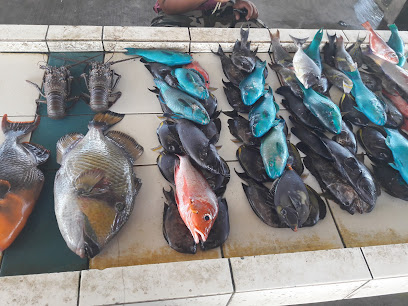
Samoa Lokostyle
Explore the vibrant shopping experience at Samoa Lokostyle in Apia, where local crafts meet international finds.

Tiatia KALECS Store
Discover Tiatia KALECS Store in Salelologa: Your go-to supermarket for local products and global essentials.

Le-Ata Samoa
Explore Le-Ata Samoa for a diverse selection of authentic Samoan handicrafts and unique gifts that embody the spirit of the islands.

Janet's
Discover the heart of Samoan culture at Janet's, where unique gifts and local craftsmanship come together in a vibrant shopping experience.
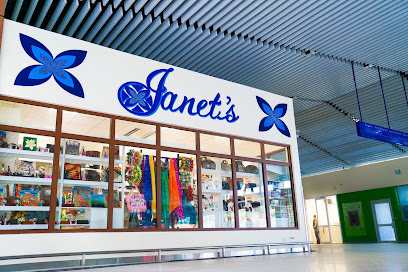
CK Mart
Explore local Samoan flavors at CK Mart, a vibrant grocery store in Apia, offering fresh produce and unique culinary delights.

Faletaulupe Malupo Taufao’s Shop
Explore the essence of Samoa through local crafts and unique souvenirs at Faletaulupe Malupo Taufao’s Shop in Vailoa.

Sttar Traders
Discover Sttar Traders in Auala, your ultimate supermarket destination for local flavors and essential goods while enjoying your Samoan adventure.
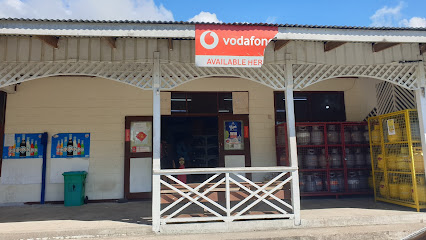
Essential bars & hidden hideouts
Return to Paradise Resort
Discover the ultimate tropical getaway at Return to Paradise Resort in Lefaga, offering stunning beaches, luxurious amenities, and unforgettable experiences.

Sinalei Reef Resort & Spa
Experience the ultimate tropical getaway at Sinalei Reef Resort & Spa, where luxury meets the natural beauty of Samoa and adventure awaits at every turn.

Le Lagoto Resort & Spa
Discover paradise at Le Lagoto Resort & Spa, where luxury meets the beauty of Savai'i's pristine beaches and vibrant culture.

Amoa Resort Savaii
Experience the beauty of Samoa at Amoa Resort Savaii, where relaxation meets adventure in a tropical paradise.
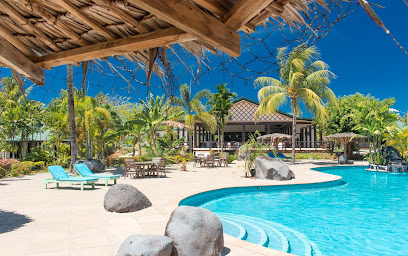
Faofao Beach Fales
Experience the tranquility and beauty of Faofao Beach Fales, a serene retreat on Samoa's stunning south coast with unique accommodations and delicious local cuisine.

Savaii Lagoon Resort
Discover the charm of Savaii Lagoon Resort, where stunning lagoon views meet exceptional hospitality in Samoa's tropical paradise.

Falealupo Beach Fales
Discover the serene beauty of Falealupo Beach Fales, where tropical paradise meets comfortable lodging for an unforgettable Samoan getaway.

Lusia's Lagoon Chalets
Experience the tranquility of Lusia's Lagoon Chalets, a unique retreat combining delightful dining, comfortable accommodation, and refreshing swimming in Salelologa.

Savai'i Harbourside Café & Pizza Bar
Experience the essence of Samoa with delicious pizzas and stunning ocean views at Savai'i Harbourside Café & Pizza Bar, a culinary gem in Salelologa.

LuluLosa Beach Fales Bar & Grill
Discover the serene beauty and delightful flavors of Samoa at LuluLosa Beach Fales Bar & Grill, your ultimate coastal dining destination.

RSA Night Club
Discover unforgettable nights filled with music, dancing, and local flavors at RSA Night Club in Apia, Samoa.

Cocktails On the Rocks
Discover the vibrant nightlife of Apia at Cocktails On the Rocks, where breathtaking ocean views meet expertly crafted cocktails in a lively beachfront bar.

Barefoot Bar and Restaurant
Experience the taste of Samoa at Barefoot Bar and Restaurant, where local flavors meet breathtaking views in a relaxed coastal setting.

JP Bar
Discover the vibrant nightlife at JP Bar in Apia, where quick service meets great music for an unforgettable evening.

Ieu and Winnie's Islands View Motel
Discover the charm of Samoa at Ieu and Winnie's Islands View Motel, where comfort meets local flavor in a stunning tropical setting.

Local Phrases
-
- HelloTalofa
[Tah-loh-fah] - GoodbyeTofa
[Taw-fah] - YesIoe
[Ee-oh-eh] - NoLeai
[Lay-aye] - Please/You're welcomeFa'amalie
[Fah-ah-mah-lee-eh] - Thank youFa'afetai
[Fah-ah-feh-tie] - Excuse me/SorryFa'amalie
[Fah-ah-mah-lee-eh] - How are you?O ai oe?
[Oh-eye-oh-eh] - Fine. And you?Lelei. Pe a oe?
[Lay-lay. Pay-ah-oh-eh] - Do you speak English?Ou te lelei ona faia le fa'ainglisi?
[Oh-oo-teh-lay-lay-oh-nah-fah-ee-ah-lay-fah-ah-een-glee-see] - I don't understandE le mafai ona ou malamalama
[Ay-lay-mah-fie-oh-nah-oh-mah-lah-mah-lah-mah]
- HelloTalofa
-
- I'd like to see the menu, pleaseOu te fia vaega le tusi fia'ono, fa'amalie
[Oh-teh-fee-ah-vai-eh-gah-lay-too-see-fee-ah-oh-no-fah-ah-mah-lee-eh] - I don't eat meatE le auai i le kikila
[Ay-lay-ow-ah-ee-ee-lay-key-key-lah] - Cheers!Manuia!
[Mah-noo-ee-ah] - I would like to pay, pleaseOu te fia totogi, fa'amalie
[Oh-teh-fee-ah-toe-toe-gee-fah-ah-mah-lee-eh]
- I'd like to see the menu, pleaseOu te fia vaega le tusi fia'ono, fa'amalie
-
- Help!Tulou!
[Too-low] - Go away!Alu i tua!
[Ah-loo-ee-too-ah] - Call the Police!Fa'afesootai i le Fa'amasinoga!
[Fah-ah-fey-soh-oh-tie-ee-lay-fah-ah-mah-see-noh-ngah] - Call a doctor!Fa'afesootai i le foma'i!
[Fah-ah-fey-soh-oh-tie-ee-lay-foh-mah-ee] - I'm lostUa ou taumafai
[Oo-ah-oh-tow-mah-fie] - I'm illUa ou oso iai
[Oo-ah-oh-oh-soh-ee-eye]
- Help!Tulou!
-
- I'd like to buy...Ou te fia fa'atau...
[Oh-teh-fee-ah-fah-ah-tow] - I'm just lookingOu te vaai
[Oh-teh-vah-eye] - How much is it?E fia ai?
[Ay-fee-ah-eye] - That's too expensiveO lelei le tau
[Oh-lay-lay-lay-tow] - Can you lower the price?Ou te fia fa'atagata le tau?
[Oh-teh-fee-ah-fah-ah-tah-gah-tah-lay-tow]
- I'd like to buy...Ou te fia fa'atau...
-
- What time is it?O le a le taimi?
[Oh-lay-ah-lay-tie-mee] - It's one o'clockUa le tasi
[Oo-ah-lay-tah-see] - Half past (10)I le aniva (tefulu)
[Ee-lay-ah-nee-vah-tay-foo-loo] - MorningTaeao
[Tie-ah-oh] - AfternoonAfiafi
[Ah-fee-ah-fee] - EveningIliili
[Ee-lee-ee-lee] - YesterdayAnanafi
[Ah-nah-nah-fee] - TodayLenei
[Lay-nay-ee] - TomorrowTaeao
[Tie-ah-oh] - 1Tasi
[Tah-see] - 2Lua
[Loo-ah] - 3Tolu
[Toh-loo] - 4Fa
[Fah] - 5Lima
[Lee-mah] - 6Ono
[Oh-noh] - 7Fitu
[Fee-too] - 8Valu
[Vah-loo] - 9Iva
[Ee-vah] - 10Sefulu
[Say-foo-loo]
- What time is it?O le a le taimi?
-
- Where's a/the...?O fea le...?
[Oh-feh-ah-lay] - What's the address?O le a le tuatusi?
[Oh-lay-ah-lay-too-ah-too-see] - Can you show me (on the map)?Ou te fesoasoani mai ia te a'u (i le mapa)?
[Oh-teh-fey-soh-ah-soh-ah-nee-my-ee-ah-teh-ah-oo-ee-lee-mah-pah] - When's the next (bus)?Aso a e te sau ai le taimi o le taeao?
[Ah-soh-ah-eh-teh-sow-ah-ee-lay-tie-mee-oh-lay-tie-ah-oh] - A ticket (to ....)Tiketi (i le ....)
[Tee-kay-tee-ee-lay]
- Where's a/the...?O fea le...?
History of Falealupo
-
Falealupo is one of the oldest villages in Samoa, with a history that dates back centuries. It has long been a place of significant cultural and spiritual importance for the Samoan people. The village is often associated with legends and myths, particularly those concerning the Samoan gods and goddesses. According to local tradition, Falealupo is considered the gateway to Pulotu, the underworld in Samoan mythology.
-
In the early 19th century, European explorers and missionaries began to arrive in Samoa. Falealupo was among the villages that experienced the influence of these newcomers. The London Missionary Society played a significant role in introducing Christianity to Falealupo, transforming the spiritual landscape of the village. Churches were established, and traditional beliefs began to blend with Christian teachings.
-
In February 1990, Cyclone Ofa struck Samoa, causing widespread devastation. Falealupo was heavily impacted, with many homes and structures destroyed. The cyclone also damaged the natural environment, including the lush tropical forests that surround the village. The community's resilience was tested, but they managed to rebuild and recover over time, continuing to preserve their traditions and way of life.
-
Constructed in the 1990s, the Falealupo Canopy Walkway is a major attraction for visitors to the village. This suspended bridge, which extends through the treetops of the rainforest, was built to promote eco-tourism and to provide a new source of income for the local community. It offers a unique perspective of the natural beauty and biodiversity of the area, while also emphasizing the importance of conservation.
-
Falealupo continues to be a stronghold of Samoan culture and tradition. The village elders play a crucial role in preserving the oral histories and customs of their ancestors. However, like many indigenous communities, Falealupo faces modern challenges such as climate change, economic pressures, and the influence of globalization. Despite these challenges, the people of Falealupo remain dedicated to maintaining their cultural heritage and way of life.
Falealupo Essentials
-
Falealupo is located on the northwest tip of Savai'i, the largest island in Samoa. To get there, you first need to fly into Faleolo International Airport near Apia on the island of Upolu. From Apia, you can take a ferry from Mulifanua Wharf to Salelologa Wharf on Savai'i. The ferry ride takes approximately 90 minutes. Once on Savai'i, you can hire a taxi or rent a car for the 60-kilometer drive to Falealupo, which usually takes around 1.5 to 2 hours.
-
Transportation options in Falealupo and Savai'i include taxis, rental cars, and local buses. Taxis are convenient but can be expensive for long distances. Renting a car gives you the freedom to explore the island at your own pace. Local buses are an economical option but can be less reliable in terms of schedule. Make sure to check the bus routes and times in advance.
-
The official currency in Samoa is the Samoan Tala (WST). Credit cards are accepted in some hotels, restaurants, and shops, but it is advisable to carry cash, especially in smaller establishments and more remote areas like Falealupo. ATMs are available in larger towns such as Salelologa, but may not be present in smaller villages. It is wise to withdraw sufficient cash before heading to Falealupo.
-
Falealupo is generally a safe destination for tourists. However, it is advisable to take standard precautions. Avoid walking alone at night and keep an eye on your belongings in crowded places. While there are no specific high-crime areas targeting tourists, it is always best to stay vigilant and aware of your surroundings. The locals are generally friendly and helpful.
-
In case of emergency, dial 911 for immediate assistance. There are medical facilities available in Salelologa, the main town on Savai'i. It is recommended to have travel insurance that covers medical emergencies. For minor health issues, there are pharmacies in the larger towns where you can purchase over-the-counter medications. It is also a good idea to have a basic first-aid kit while traveling in remote areas.
-
Fashion: Do dress modestly, especially when visiting villages and religious sites. Avoid wearing revealing clothing. Religion: Do respect local customs and traditions. Always ask for permission before entering a village church. Public Transport: Do be respectful and give up your seat to elderly passengers. Don’t eat or drink on public transport. Greetings: Do greet people with a smile and a handshake. A slight bow of the head is also a sign of respect. Eating & Drinking: Do try local delicacies and accept food offerings graciously. Don’t refuse hospitality, as it is considered impolite.
-
To experience Falealupo like a local, visit the Falealupo Canopy Walkway for stunning views of the rainforest. Spend time at the Falealupo Beach and engage with the local community. Participate in cultural activities and traditional ceremonies if invited. Don’t miss the chance to see the Falealupo Rainforest Preserve, which offers a unique glimpse into Samoa’s natural beauty. Engage with locals, as they are often friendly and willing to share stories about their culture and history.
Trending Landmark in Falealupo
Nearby Cities to Falealupo
-
Things To Do in Asau
-
Things To Do in Savai'i
-
Things To Do in Manase
-
Things To Do in Fagamalo
-
Things To Do in Salelologa
-
Things To Do in Mulifanua
-
Things To Do in Apia
-
Things To Do in Lalomanu
-
Things To Do in Leone
-
Things To Do in Tafuna
-
Things To Do in Pago Pago
-
Things To Do in Fagatogo
-
Things To Do in Aua
-
Things To Do in Ha'ano
-
Things To Do in Pangai





